2024
The topic of my masters thesis is about the relationship between Humans and Robots. Specifically the feeling of a robot feeling alive, also named Animacy. I asked the question, if people have the ability to design their own robots behaviour does the robot feel more alive?
The relationship between robot and roboticist been investigated before and is described as a unique perspective. As the robot is not just a form of output but part of the conversation. It becomes a team member. The robots development process is so complex it is hard to predict what it will exactly happen. This unknown behaviour is perceived as it having a mind of its own. The conversation is not a one time interaction but a continuous back and forth.
In my thesis I refer to the robots as a Creature. Partly because of the negative associations the word robot can have and because of the paper by Rodney Brooks, Intelligence without representation. which has been a great source of inspiration.
My goal was to make a Creature that tries to stimulate this back and forth relationship but for people that don’t necessarily have technical skills. If this back and forth happens does that influence their perception of animacy and therefor create a stronger bond?
If you are interested in this topic feel free to read my masters thesis as it is online somewhere. it will go more into detail of every aspect mentioned on this page!
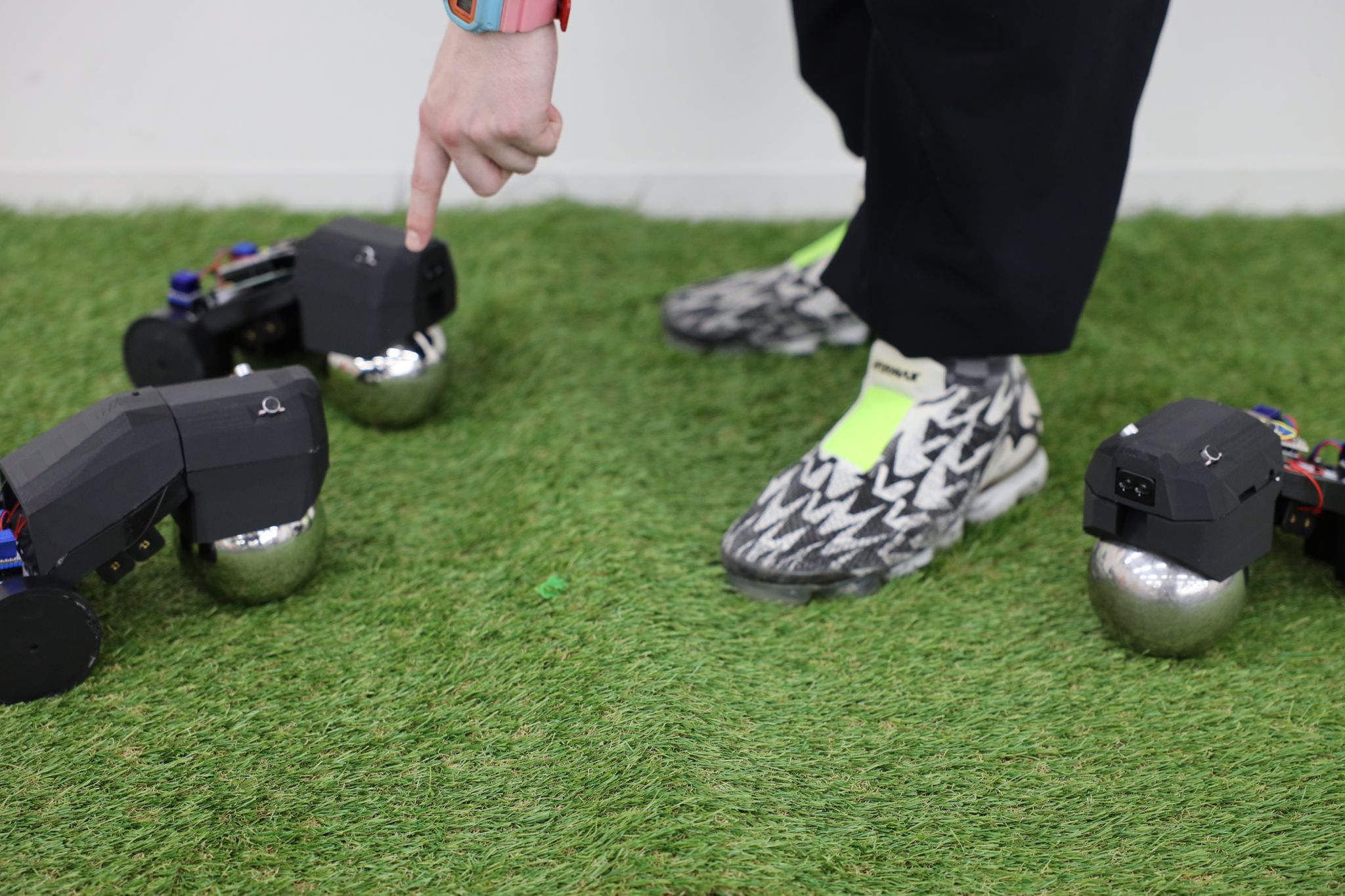

Design
The Creature that I designed is autonomous, non anthropomorphic, non zoomorphic. Its behavior can be reprogrammed by the user and the programming language is meant to be ambiguous so that it encourages the back and forth between Creature and user. The behavioural logic is all trigger based and is inspired by Subsumption Architecture from Rodney Brooks.
I made 8 of these Creatures and gave them away to people to have it in their home for an extended period of time. Half of those people are allowed to reprogram and all people filled in questionnaires about their perception. From this we can show what kind of impact the ability to program has on the users.
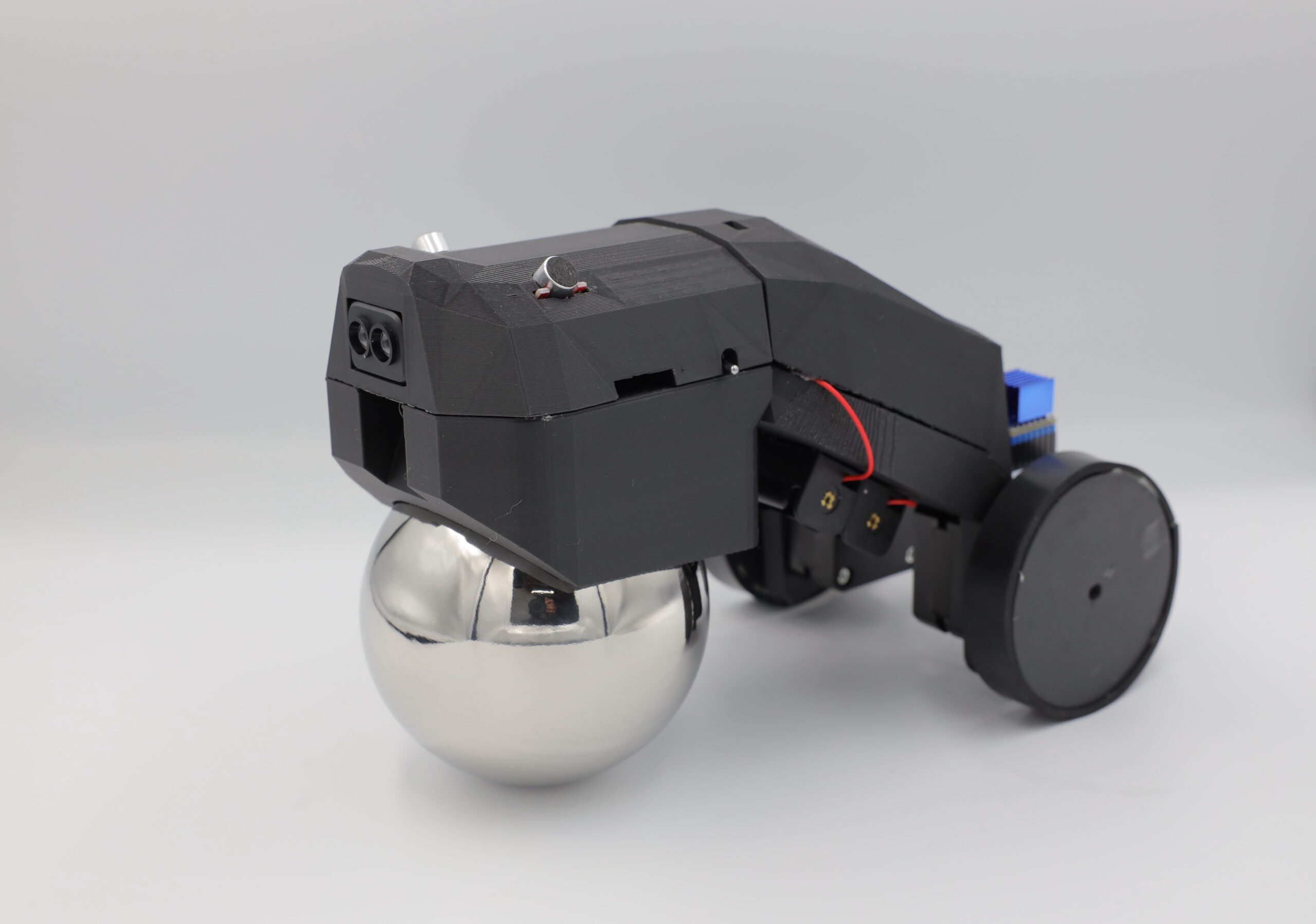
Complete Creature.

Reprogramming the Creature.
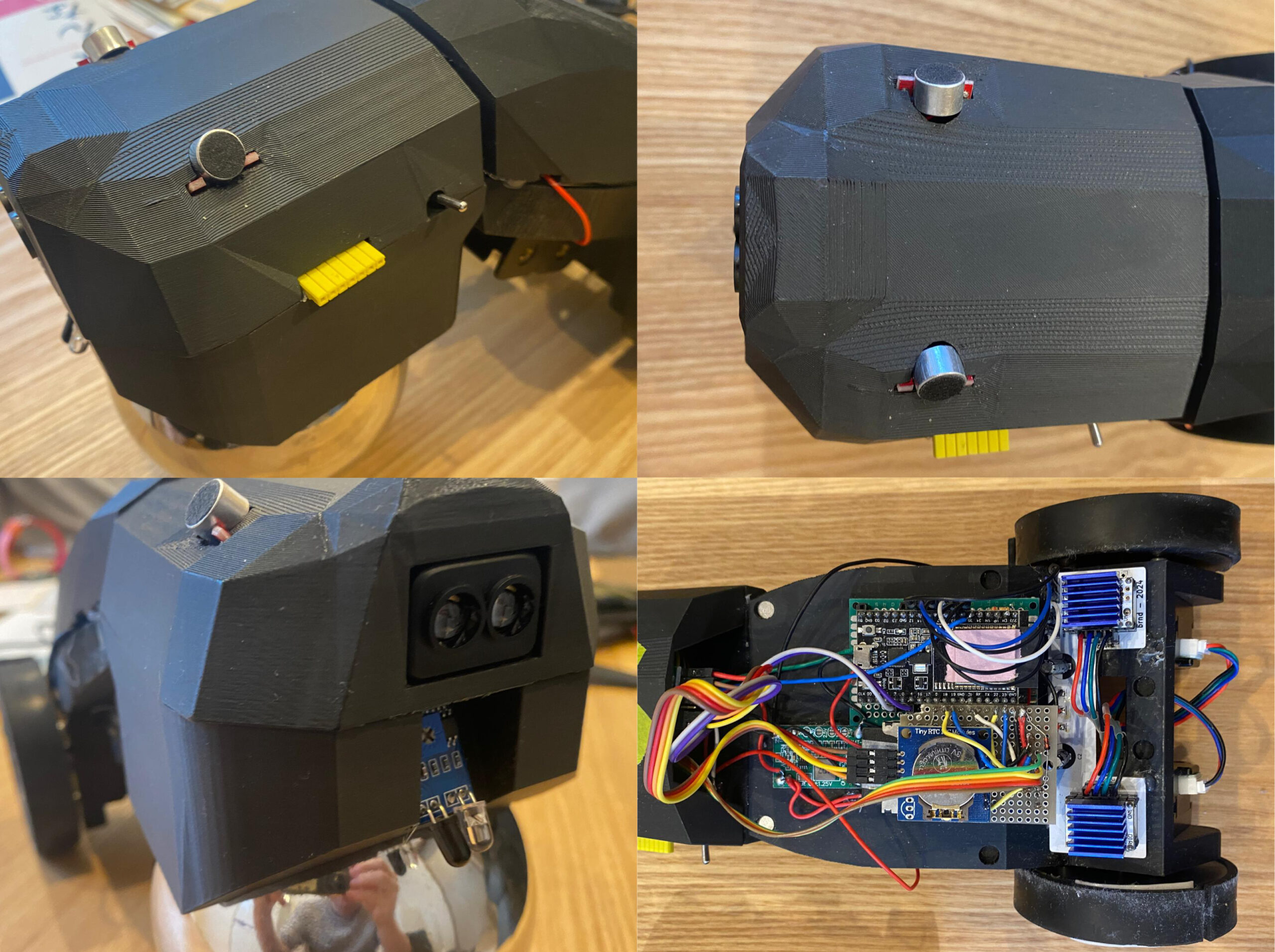
multiple details
Outcome
All participants filled out a godspeed questionnaire about their Creatures every day. Using this data we can map how their perception changed over a longer period.
In the graph on the right you can the the difference between the customization group (C) and no customization group (NC) after 7 days. In the category anthropomorphism, animacy and perceived intelligence the group that was able to customize had a bigger increase.
This suggests that customization could in fact have an influence on the perception of animacy! (But I cant say for sure because my testing group is not big enough.)
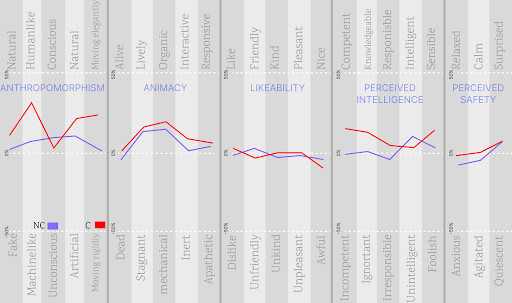
The Paradox of Programmed Volition
Finally I also exhibited these Creatures. As the exhibition visitors could not spend an extended amount of time with the Creatures the framing was a little bit different. Participants were asked to reprogram one of the 6 Creatures. Which in turn has an influence on all the other ones. I wanted to know if people felt closer to the Creature they programmed versus the rest of the group.
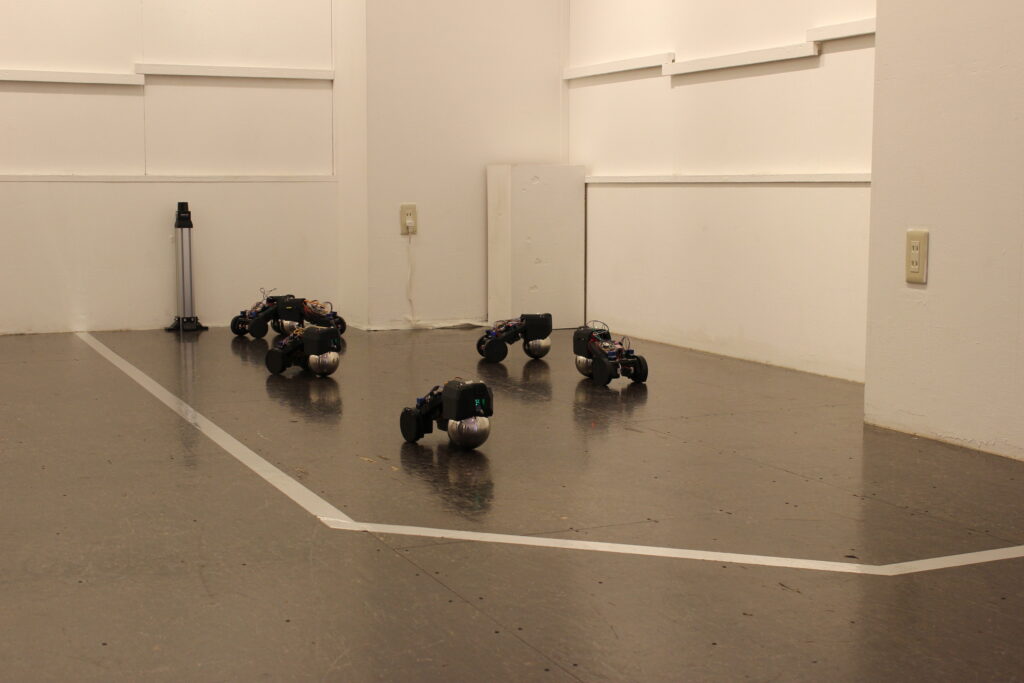
6 Creatures in an exhibition space.
